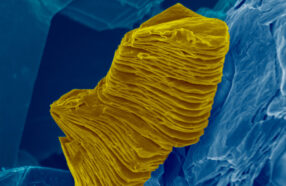
Materials Science
Scientists Say: 2-D Material
Two-dimensional materials such as graphene could improve electronics, carbon capture and more.
Come explore with us!

Two-dimensional materials such as graphene could improve electronics, carbon capture and more.

Steady ‘winds’ can carve clay blobs into lion-shaped landforms called yardangs, a new study suggests. One such yardang may have inspired the Great Sphinx of Giza.

Researchers in Sweden coaxed wood to conduct electricity, then used it to make a climate-friendlier building block of electronics.

To slow global warming, we’ll need help from CO2-trapping materials. Enter MXenes. They’re strong and reactive — and they love to eat up CO2.

A new coating made from a renewable resource — water-loving nanoparticles made from wood — could keep glass surfaces fog-free.

This cellulose and lignin, two major building blocks of trees, could lead to greener electronics.

Some can aid the climate by removing pollutants. Others would just avoid dirtying the environment in the first place.

Engineers have found a material that can collect carbon dioxide from the air. When later mixed with water, it forms baking soda that can be shed in the sea.

Finalists in the 2023 Thermo Fisher Scientific Junior Innovators Challenge are doing projects that aim to help others.

A new compact 3-D printer can produce COVID-19 vaccine patches. These are less painful than the jab and can be stored more easily than liquid vaccines.